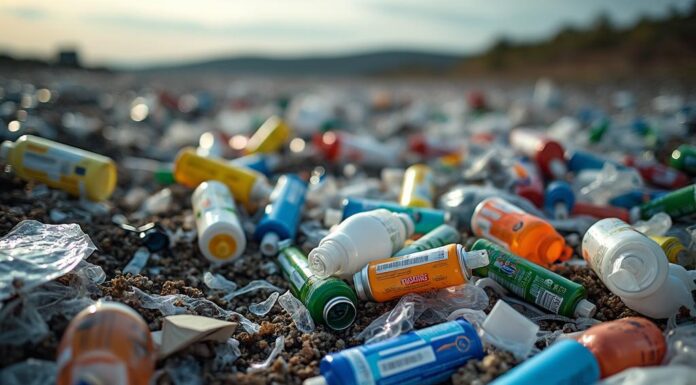Introduction: The Plastic Predicament
The world’s oceans, majestic and teeming with life, face an invisible but pervasive threat—plastic pollution. While plastic recycling programs have been touted as a key solution, recent data and expert analysis suggest that these efforts may be more of a Band-Aid than a cure. This article delves into the efficacy and limitations of current recycling practices, highlights innovative alternatives, and explores what more can be done to genuinely reduce plastic waste in our oceans.
The Reality of Recycling
Despite the common perception of recycling as an environmental savior, startling statistics reveal its inadequacies. According to recent comprehensive research (Yu et al., 2023), only about 9% of global plastic waste is actually recycled. Annually, around 10 million tons of plastic end up in our oceans (World Economic Forum), contributing to an estimated 75 to 199 million tons currently polluting these critical habitats. The numbers underline a grim reality: our current recycling infrastructure is not only overwhelmed but also underperforming.
The Myth of Advanced Recycling Technologies
As traditional mechanical recycling languishes under the weight of global waste, new ‘advanced recycling’ technologies such as chemical recycling have entered the scene. Proponents claim these methods can turn plastic waste into valuable resources, but critical voices are pointing out significant flaws. These technologies often suffer from low yields, high energy consumption, and substantial greenhouse gas emissions—factors that diminish their sustainability claims (general synthesis from sources [1][2]).
Environmental and Human Costs
Communities living near coasts and petrochemical facilities bear the brunt of the plastic pollution crisis. These areas suffer not only environmental degradation but also health impacts due to continual exposure to toxic pollutants (Kibria et al., 2023). The perpetuation of plastic production places undue burdens on these populations, who are often the least equipped to respond or recover from such relentless environmental assault.
Shift Toward Systemic Solutions
Experts argue for a systemic overhaul of our approach to plastics. Yu et al. (2023) advocate for a comprehensive strategy that not only promotes recycling but also emphasizes reduction in plastic production and improvements in waste management infrastructure. Innovations such as reuse-and-refill systems and deposit-return schemes are gaining traction as practical solutions that could significantly decrease new plastic production while encouraging recycling.
Community Actions and Global Initiatives
Beach cleanups continue to play a crucial role in mitigating existing ocean plastics. Organizations like Ocean Cleanup are developing technologies aimed at extracting plastics from waters before they break down into microplastics which are nearly impossible to retrieve. On an international scale, calls for extended producer responsibility (EPR) laws are intensifying, urging producers to take accountability for their products throughout their lifecycle.
KEY FIGURES
- Only about 9% of plastic waste is recycled globally, while approximately 10 million tons of plastic enter the oceans annually (World Economic Forum, cited in [3]).
- There are currently 75 to 199 million tons of plastic polluting the oceans worldwide (World Economic Forum, cited in [3]).

- Plastic production has increased massively since the 1950s, with projections estimating up to 12,000 million metric tons of plastic waste in the natural environment by 2050 (Yu et al., 2023) [1].
- More than 1000 rivers contribute 80% of plastic emissions to oceans, with Asia being the largest contributor (Yu et al., 2023) [1].
- Derelict fishing gears affect 69% of coral sites in Oman, significantly reducing coral biodiversity (Al-Jufaili et al., 1999) [4].
- Plastic pollution causes an estimated USD 13 billion annual damage to the ocean economy (UNEP cited in [2]).
RECENT NEWS
- A 2023 comprehensive study emphasizes that despite recycling efforts, plastic pollution continues to grow, with ocean plastic increasing over 33-fold between 2015 and 2017, highlighting the limitations of recycling alone to solve the problem [2].
- Reports in 2024 highlight that “advanced recycling” or chemical recycling technologies often have low yields, high energy consumption, and emit significant greenhouse gases, undermining claims of them as sustainable solutions (general synthesis from sources [1][2]).
- Coastal and fenceline communities continue to bear disproportionate health burdens from plastic pollution and petrochemical industry emissions, which recycling does not address [1][2].
STUDIES AND REPORTS
- Yu et al. (2023) provide a global analysis showing that recycling and reuse are just one component of a needed multi-pronged approach; they stress the urgent need for coordinated global efforts including production reduction and better waste management [1].
- Kibria et al. (2023) conclude that plastic waste is a major environmental challenge and that current recycling rates are insufficient to curb marine pollution; they emphasize the health and ecosystem impacts of plastic pollution beyond what recycling can resolve [2].
- Thushari et al. (2020) document how plastic debris disrupts marine ecosystems by physically altering habitats, reducing biodiversity, and affecting species behavior, problems recycling cannot reverse [4].
TECHNOLOGICAL DEVELOPMENTS
- “Advanced recycling” technologies—such as chemical recycling—are being promoted but face criticism for low efficiency, high energy use, and emissions; there is no consensus that these technologies can scale sustainably or reduce ocean plastic significantly [1][2].
- Innovations in reuse-and-refill systems, deposit-return schemes, and extended producer responsibility (EPR) programs are gaining traction as more effective at reducing plastic production and pollution than recycling alone [1].
- Beach cleanup initiatives remain critical, as mechanical removal addresses existing ocean plastic that recycling cannot recover, particularly microplastics and ghost gear [3].
MAIN SOURCES
- https://www.frontiersin.org/journals/marine-science/articles/10.3389/fmars.2023.1305091/full — Global marine plastic pollution analysis and recycling assessment (Yu et al., 2023).
- https://pmc.ncbi.nlm.nih.gov/articles/PMC9857911/ — Challenges and opportunities in plastic waste management including marine pollution (Kibria et al., 2023).
- https://news.climate.columbia.edu/2022/10/13/how-do-we-clean-up-all-that-ocean-plastic/ — Overview of ocean plastic pollution scale and cleanup efforts.
- https://pmc.ncbi.nlm.nih.gov/articles/PMC7475234/ — Ecological impacts of plastic debris on marine ecosystems (Thushari et al., 2020).
- https://cleanwater.org/problem-marine-plastic-pollution — Marine plastic pollution’s impact on wildlife and ecosystems.
Summary:
Plastic recycling currently addresses only a small fraction of global plastic waste and does not significantly reduce ocean pollution, which continues to worsen. Industry claims about recycling, especially advanced chemical recycling, often overstate environmental benefits and may serve as greenwashing to delay regulation and sustain petrochemical growth. Ocean impacts such as microplastics, ghost fishing gear, and pollution from tire dust and fibers remain largely unmitigated by recycling. Experts recommend prioritizing reduction in plastic production, reuse and refill systems, deposit-return schemes, and extended producer responsibility policies as more effective and just solutions to ocean plastic pollution.
Other references:
frontiersin.org – Global analysis of marine plastics and implications …
pmc.ncbi.nlm.nih.gov – Plastic Waste: Challenges and Opportunities to Mitigate …
news.climate.columbia.edu – How Do We Clean Up All That Ocean Plastic?
pmc.ncbi.nlm.nih.gov – Plastic pollution in the marine environment – PMC
cleanwater.org – The Problem of Marine Plastic Pollution
ourworldindata.org – Source
unep.org – Source
pmc.ncbi.nlm.nih.gov – Source
sciencedirect.com – Source
plasticpollutioncoalition.org – Source
mdpi.com – Source
epa.gov – Source
upi.com – Source
frontiersin.org – Source
theoceancleanup.com – Source
earth911.com – Source
oceanconservancy.org – Source
oceanconservancy.org – Source
biologyinsights.com – Source



